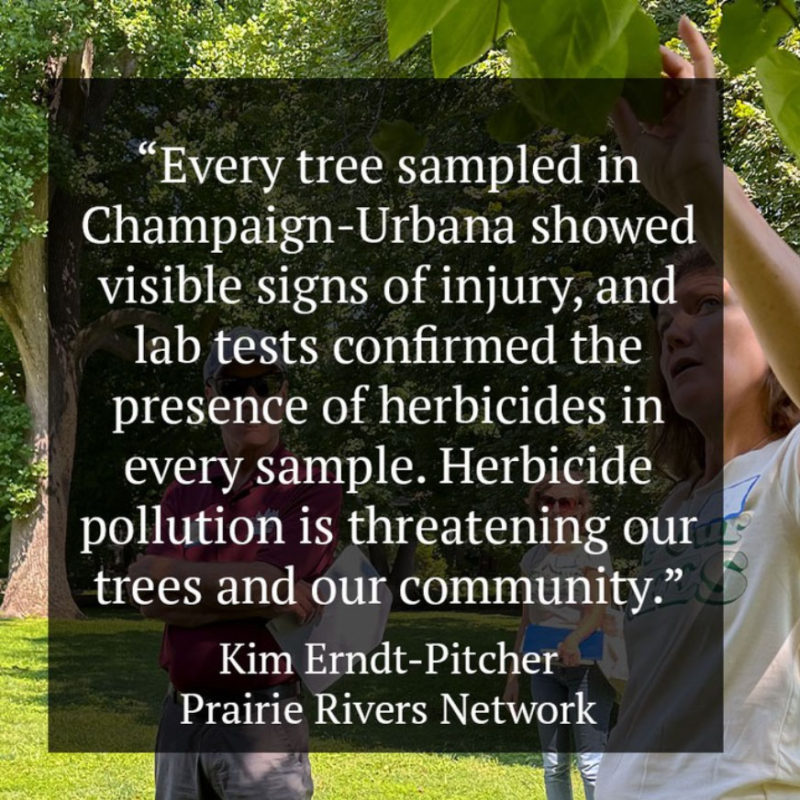By Kim Erndt-Pitcher
As we close out 2023 and look towards another year of ensuring all have access to healthy lands, clean air, and clean water forever, it is important for us to remember that all of our work is connected. We can’t have clean water without healthy lands and clean air. Energy production, food and agricultural commodity production, mineral and fiber production and their disposal all impact the health of our land, air, and water. We also know that sediment and nutrients from agriculture and municipalities spill into our water supply.

Pesticide pollution comes in many forms, and one type, herbicide drift, threatens our water across the state. Drifting herbicides don’t just land on trees, crops, and other plants. They can land anywhere, including homes, schools, hospitals, playgrounds, and bodies of water. It has been well documented that pesticides can travel long distances in the atmosphere. Herbicides have even been found in rain water at rates that can injure plants.
Designed to be Water Soluble
Many pesticides, including herbicides, are designed to be water soluble so they can be transported through plant tissue. This also means that they can easily wash off plant and soil surfaces and into water resources where they can harm aquatic life. The herbicide atrazine is widely used early in the spring for weed control, but it can also be used later in the growing season. As a result of its widespread use, it is one of the most frequently detected herbicides in drinking water resources across the country.
Neonicotinoids, common insecticides widely used in seed and chemical lawn treatment products, are known for their toxicity to bees; however, they too are water soluble and highly toxic to many aquatic species. In fact, neonicotinoids are considered one of the leading threats to aquatic life in US streams.
Exempt from Pesticide Regulation
Just like the use of pesticides on lumber products, the use of pesticides on seeds is largely unregulated. Seeds coated with neonicotinoids and other pesticides are exempt from most federal pesticide regulations under a “treated article exemption.” While thought to be an efficient use of pesticides, the economic value of using seed treatments has been challenged for years.
Neonicotinoids and other pesticides that a plant doesn’t use stay in our environment until they degrade. Spring rains wash the majority of seed treatments into our soil, drain tiles, ditches, and nearby streams. As a result, many rural agricultural communities throughout the country have spikes of neonicotinoids in surface waters and even sometimes in treated drinking water during spring planting season.
We’re Expanding Our Testing
This is why our new Clean Water Forever campaign will expand our work to test for pesticides and other harmful chemicals like polyfluoroalkyl substances, known as PFAS, in several Illinois communities during the 2024 growing season. As we continue to push the state to implement its new water plan and expand surface and groundwater monitoring, it’s important for groups like PRN to capture data that paints a clear picture of the pollution threatening our rivers, habitat, and communities.
Our pesticide and biodiversity work at PRN has important implications for water quality for all of Illinois. As we inform the public about these issues, we are also pushing for stronger laws and more enforcement to stop the use of these pesticides from causing harm. We are working to protect our biodiversity, our streams, and our community water supplies… forever.







